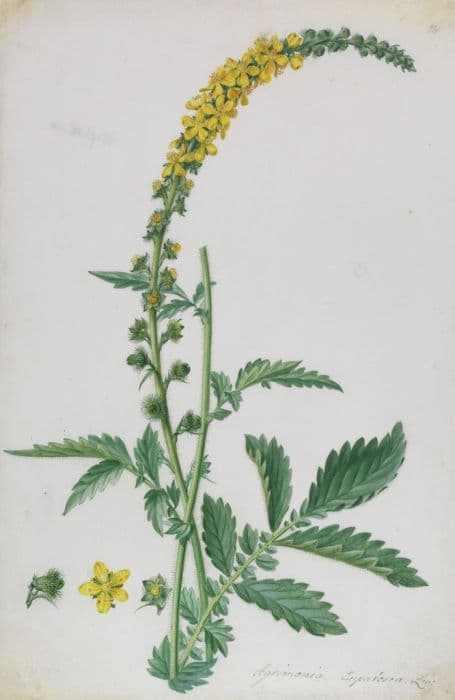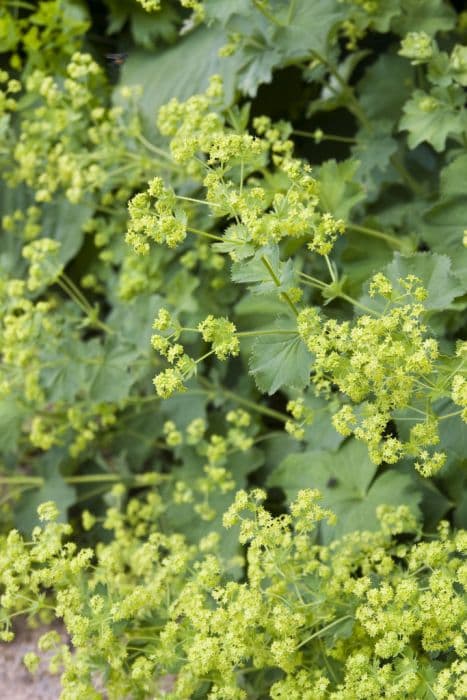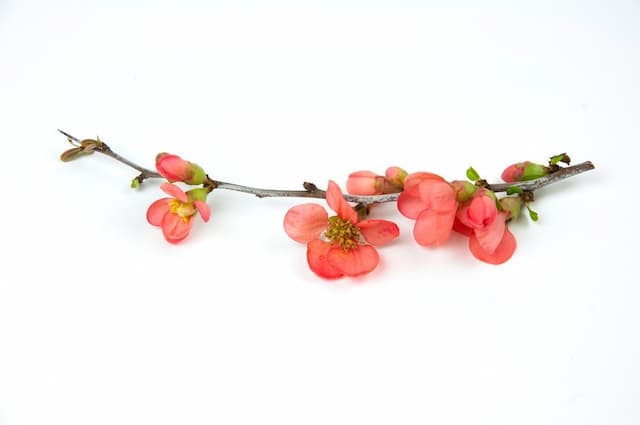Danse du Feu Climbing Rose Rosa 'Danse du Feu' (ClF)

ABOUT
Rosa 'Danse du Feu', commonly known as the 'Dance of Fire' climbing rose, is an ornamental plant with a striking appearance. Its stems are adorned with lush green leaves which provide a vivid backdrop to the plant's vibrant blooms. This variety is known for its eye-catching flowers, which tend to form in clusters and can ignite any garden with their fiery hue. The blossoms are typically a warm, fiery shade of orange-red to scarlet, evoking the passionate energy of a dancer's performance, hence its evocative name. Each flower showcases a classic rose form, with multiple layers of velvety petals unfurling from a central point to create a full, rounded look. The roses often exude a delightful fragrance which is as alluring as their visual appeal. Throughout its blooming season, 'Danse du Feu' provides a continuous show of color, with flowers regularly replacing one another, ensuring that the display remains fresh and dynamic. As a climbing rose, this plant is designed to grow upward, gracing trellises, walls, and fences with its vibrant, blossoming presence. The plant's ability to add height and color to vertical spaces makes it a favorite among garden enthusiasts looking to create an engaging garden layout.
About this plant
 Names
NamesFamily
Rosaceae
Synonyms
Dance of Fire, Danse du Feu Climbing Rose
Common names
Rosa 'Danse du Feu' (ClF)
 Toxicity
ToxicityTo humans
The climbing rose, which is the most common common name of Rosa 'Danse du Feu', is not considered toxic to humans. In general, rose plants are not known for being poisonous and typically do not cause adverse reactions when touched or ingested in small amounts. However, rose thorns can cause physical injuries or infections if not handled properly. The ingestion of large quantities of rose petals, leaves, or hips could potentially cause stomach discomfort due to the fibrous plant material, but this is not due to toxicity.
To pets
Roses, including the climbing rose which is the most common name for Rosa 'Danse du Feu', are generally considered non-toxic to pets. Cats and dogs can occasionally experience mild gastrointestinal upset if they consume a significant amount of rose petals, leaves, or stems, but roses are not known to cause serious poisoning in pets. Care should be taken to prevent pets from injuring themselves on the thorns of the rose plant.
 Characteristics
CharacteristicsLife cycle
Perennials
Foliage type
Deciduous
Color of leaves
Green
Flower color
Red
Height
8-10 feet (2.4-3 meters)
Spread
3 feet (0.9 meters)
Plant type
Climber
Hardiness zones
6
Native area
Cultivar
Benefits
 General Benefits
General Benefits- Ornamental Value: 'Danse du Feu' rose is highly valued for its showy, bright orange-red blooms, which can enhance the aesthetic appeal of gardens and landscapes.
- Long Blooming Season: This variety often features a prolonged flowering period from early summer to fall, providing long-lasting color and interest.
- Attracts Pollinators: The vibrant flowers attract bees, butterflies, and other pollinating insects, which are beneficial for the garden ecosystem.
- Low Maintenance: Once established, 'Danse du Feu' roses are relatively low maintenance, requiring only basic care such as occasional pruning and watering.
- Disease Resistance: This rose cultivar is bred for improved resistance to common rose diseases like black spot and powdery mildew, reducing the need for chemical treatments.
- Adaptability: Rosa 'Danse du Feu' can adapt to a range of soil types and conditions, although it prefers well-draining soil and full sun exposure.
- Screening Plant: When grown on fences or trellises, 'Danse du Feu' climbing rose can provide screening and privacy in garden spaces.
 Medical Properties
Medical Properties- This plant is not used for medical purposes.
 Air-purifying Qualities
Air-purifying QualitiesThis plant is not specifically known for air purifying qualities.
 Other Uses
Other Uses- Rosa 'Danse du Feu', commonly known as the Climbing Rose, can be used in perfumery, contributing to the creation of rose-scented fragrances with its intense and pleasing aroma.
- The petals of Climbing Rose can be crystallized and used as edible decorations for desserts and cakes, adding both beauty and a subtle floral flavor.
- Dried petals of the Climbing Rose can be incorporated into potpourri mixes to naturally scent rooms and create a pleasant, inviting atmosphere.
- The Climbing Rose can be utilized in the crafting of natural dyes, where its petals provide a range of pink and beige hues for fabrics and other materials.
- Rose hips produced by the Climbing Rose can be used to make a variety of jams, jellies, and syrups, offering a rich source of vitamin C and a unique taste.
- The blooms of Climbing Rose can be used in floral art, such as pressing the flowers for decorative purposes in scrapbooking and stationery.
- Climbing Rose can serve as a natural pest repellent in gardens, as certain insects are deterred by the rose scent, making it a companion plant for vegetable gardening.
- Rose petals from the Climbing Rose can be used to infuse oils and vinegars, providing a delicate flavor for culinary applications and gourmet cuisine.
- The Climbing Rose can be trained to grow on various structures like pergolas and walls, serving as a living privacy screen or an ornamental façade for the garden landscape.
- Rose water distilled from the petals of Climbing Rose can be used in baking and confectionery to impart a mild rose essence to pastries, confections, and beverages.
Interesting Facts
 Feng Shui
Feng ShuiThe climbing rose is not used in Feng Shui practice.
 Zodiac Sign Compitability
Zodiac Sign CompitabilityThe climbing rose is not used in astrology practice.
 Plant Symbolism
Plant Symbolism- Love: As with many roses, the 'Danse du Feu' or Climbing Rose, is often associated with love and passion, owing to its alluring appearance and historical use in romantic gestures.
- Beauty: The stunning blooms of the Climbing Rose symbolize beauty and perfection, commonly reflecting admiration for physical or inner beauty.
- Balance: The equilibrium between the vigorous growth of the climber and its delicate flowers can represent balance and harmony in life or relationships.
- Inspiration: The 'Danse du Feu' Climbing Rose, with its fiery colors, may symbolize inspiration and enthusiasm, igniting creative or visionary passions.
- Joy: The bright and cheerful appearance of this Climbing Rose can signal joy and delight, making it a symbol of happiness and celebration.
- Transformation: The life cycle of roses, from bud to bloom, could signify transformation and the blossoming of ideas or love.
 Water
WaterThe climbing flame rose should be watered deeply and infrequently, allowing the soil to dry out between waterings to promote strong root development. Typically, this means watering once a week with about 1-2 gallons per plant during the growing season, depending on weather conditions. In hotter, drier periods, increase watering to twice a week. During the winter months, reduce watering significantly, but make sure the rose doesn't completely dry out. Ensure water is applied directly to the base of the plant to avoid wetting the foliage, which can lead to fungal diseases.
 Light
LightThe climbing flame rose thrives in full sun, requiring at least 6 to 8 hours of direct sunlight daily to perform best. Plant it in a spot where it receives unfiltered sunlight for the majority of the day. The ideal location is south-facing or west-facing to ensure it gets plenty of light; however, in extremely hot climates, some light afternoon shade can be beneficial to protect it from intense heat.
 Temperature
TemperatureClimbing flame roses are hardy and can withstand a range of temperatures, but they grow best when daytime temperatures are between 65°F and 75°F. They can survive minimum winter temperatures down to around 20°F, but should be protected from severe cold snaps. Prolonged exposure to temperatures above 90°F may stress the plant, so providing some shade during the hottest part of the day in extremely warm climates can be helpful.
 Pruning
PruningClimbing flame roses should be pruned to maintain their shape, remove dead or diseased wood, and encourage floriferous growth. Pruning should be done in late winter or early spring, before new growth begins. Remove any weak or dead canes, and cut back the remaining canes by about one-third of their length. Pruning again after the first flush of blooms can encourage a second round of flowering later in the season.
 Cleaning
CleaningAs needed
 Soil
SoilClimbing roses like 'Danse du Feu' prefer well-draining, loamy soil enriched with organic matter. A mix of one-third top soil, one-third peat moss, and one-third compost or aged manure works well. The ideal pH for climbing roses is between 6.0 and 6.5.
 Repotting
RepottingClimbing roses such as 'Danse du Feu' are not typically grown in containers and do not require repotting. They are planted in the ground and can live for many years without being moved.
 Humidity & Misting
Humidity & Misting'Danse du Feu' climbing roses are adaptable to a range of humidity levels and do best in outdoor conditions where natural humidity is present. They do not have specific humidity requirements.
 Suitable locations
Suitable locationsIndoor
Provide bright light, ensure ample air circulation.
Outdoor
Plant in full sun, shelter from strong winds.
Hardiness zone
5-9 USDA
 Life cycle
Life cycleRosa 'Danse du Feu', commonly known as the Climbing Rose, begins its life cycle when a seed germinates in soil with adequate warmth, light, and moisture during the spring. After germination, the seedling develops a root system and sprouts its first set of true leaves, entering the vegetative growth stage. As the Climbing Rose matures, it undergoes a period of rapid growth, producing long canes, compound leaves, and developing bud eyes. Flowering occurs from late spring through summer, with the plant producing its characteristic red to orange-red blooms that are pollinated by insects, leading to the formation of fruit, or rose hips, containing seeds. As the growing season ends, the Climbing Rose enters a dormant period during fall and winter, conserving energy and resources. The cycle begins anew with the return of favorable conditions in spring, where established plants may also be propagated through cuttings to create new plants.
 Propogation
PropogationPropogation time
Late winter to early spring
Propogation: The Rose 'Danse du Feu' is commonly propagated through a method called softwood cuttings. This technique is most effective in late spring to early summer when the plant's new growth is still tender. Cut a 6-inch (approximately 15 centimeters) piece from a healthy stem, ensuring at least two or three sets of leaves are present. Remove the bottom leaves and dip the cut end in rooting hormone to encourage root growth. Then, plant the cutting in a well-draining soil mix, ideally in a pot, and keep it moist and covered with a plastic bag or dome to maintain high humidity. Within several weeks, the cutting should develop roots and can be transplanted into the garden. This popular method is favored for its simplicity and high success rate with roses.









